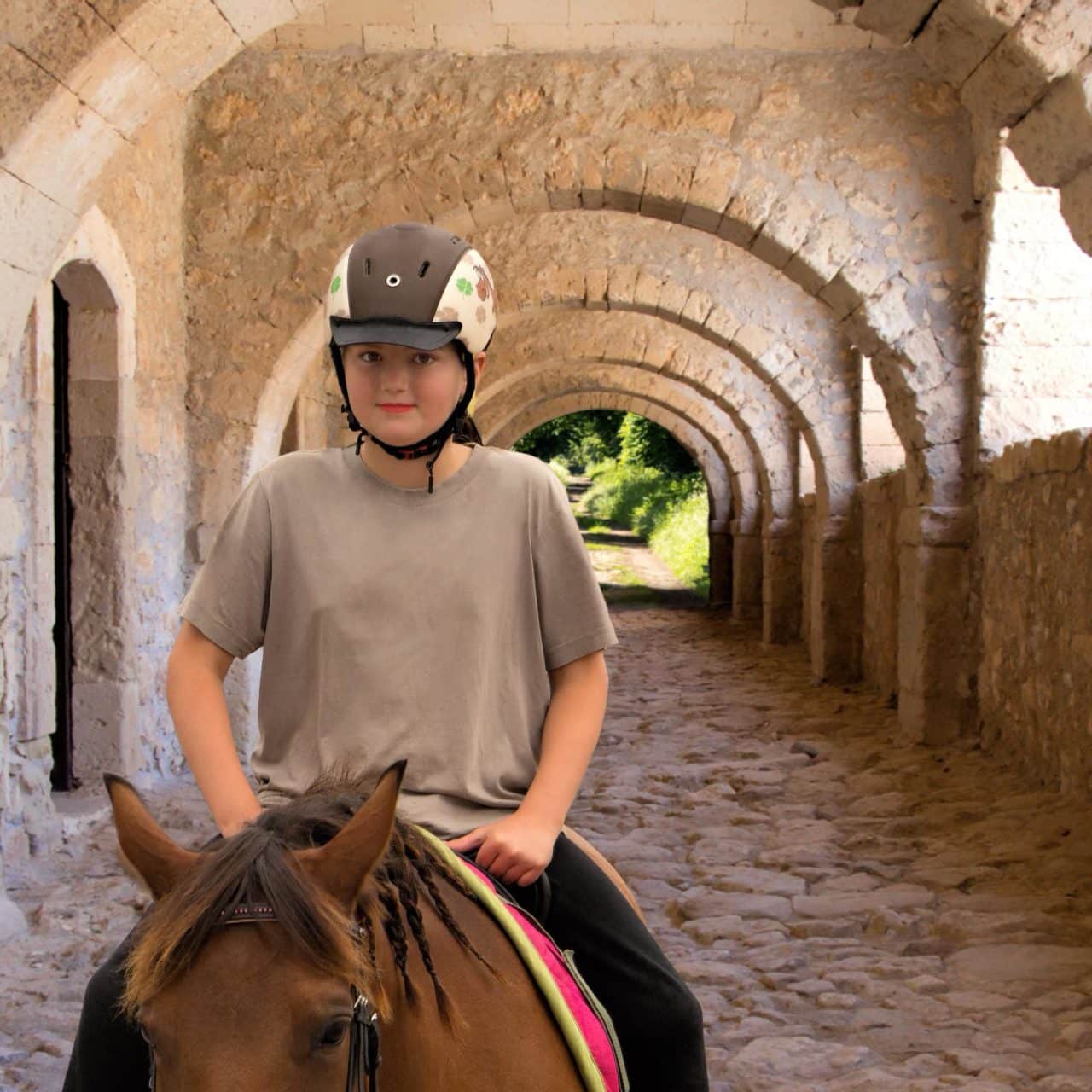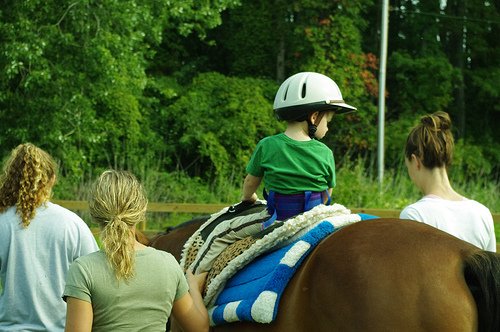
So far, I have kept most of my blogging focused on the horses. However, given my current struggles with seizures, I think this is a good time to address the issue of dealing with chronic illness as an equestrian.
I have spent all 22 years of my life dealing with chronic illnesses, jumping from one diagnosis to the next. I have asthma, allergies, migraines, and a plethora of unidentified symptoms that now seem to be some sort of obscure seizures.
According to the Center for Disease Control (CDC), half of all (American) adults – approximately 117 million people – had one or more chronic health conditions as of 2012 and one in four adults had two or more chronic health conditions. Millions of people struggle with chronic illnesses every day all over the world. Chronic health conditions affect everyone differently. Some of us look healthy enough to those around us.
“Invisible” Disabilities
If you struggle from an illness that does not leave you visibly impaired, you may face questions and even criticism from those who do not understand that not all chronic conditions are visible. It can be hard to explain to some people that not all seizures look like convulsions. In some cases – including yours truly – they may simply look like someone spacing out and not paying attention. There are any number of condition that leave people with similar difficulties trying to explain that asthma can indeed be so debilitating that a sufferer can’t walk some days or that PTSD can be so severe that someone can’t function in large crowds or around loud noises or even that people who are not veterans can suffer from PTSD for any number of reasons. The list of “invisible” disabilities goes on, but I think you get the point. Whether your disability is visible or not, there is nothing to be ashamed of.
Don’t Compare yourself to Others
I was fortunate that I had gotten to point where I could usually function relatively unimpeded by my disabilities. I was usually able to walk, trot, and canter as much as I pleased, practice dressage, do a little western reining, and generally not have to restrict myself a whole lot. However, with this latest episode of seizures, I have gone into a period where I am back to being rather restricted. I mostly walk, with a little trotting. I can do some dressage, but after being unable to ride for 2 weeks I have to bring my core muscles back into shape and be careful not to push my spinal injury too hard. It will be a few weeks before I can canter again, but that’s for my own safety as the seizures have been messing with my balance.
There is no reason to feel ashamed that you can do less than someone else. Your first priority must be your own safety and the safety of the horse. It is not fair to compare yourself to anyone else. Rather than focusing on doing better than another rider, you should focus on doing more than you did yesterday.
Maybe yesterday you posted the trot for 5 strides. Today try to post 6. If you can’t, that’s ok. Maybe your health is worse today. Instead of trotting, you might be able to walk outside of the arena for 5 minutes. That’s something that you didn’t do yesterday, so you’ve still made progress. You’ve still accomplished something.
Set Goals
[bctt tweet=”Setting goals is important because it gives you something to keep fighting for.” username=”EW_Blog”]
When battling chronic illness, setting goals is important because it gives you something to keep fighting for. I know that my goals with my horses are the only things that keep me going some days.
There are 3 types of goals you should be setting. First, you should set that one big life goal that you are always working towards, the gold at the end of the rainbow, so to speak. The life goal can be a little unrealistic, but not too far out there. Do you want to be a professional trainer? A world champion? A breeder?
Then there are the long-term goals that are big, but not too big. These goals shouldn’t be more than 2 to 4 years off. You should have at least 2 of these. They might include things like get a new horse, winning a state championship, or breeding your mare.
Of course, the most important are your short-term goals these are the goals that influence your life the most at the moment. They may include learning to canter, improving your posting trot, or learning to extend your horse’s walk.
Goals give you direction and a purpose when you get in the saddle. When battle chronic illness, every moment in the saddle is especially precious and you don’t want to waste it due to a lack of direction. Goals help you keep your focus and give you something else to focus on even if just for a little while.








Do you have any recommendations for how to help a trainer understand a chronic illness?
Hi Jesse,
Thanks for stopping by. That is a very tricky question. Unfortunately there is no one size fits all answer. It all depends on just how resistant your trainer is to understanding chronic illness.
First I would recommend having a sit down with your trainer to lay out the relevant details of your condition. Be honest and firm about what you can and cannot do. But, remember to keep it polite and respectful, especially when asking for special accommodations. Decide beforehand how much you are willing to share about your disability. It may be a good idea to write a few talking points down beforehand so you don’t forget anything important when put in a potentially stressful situation. You need to prepare yourself for rejection. Some trainers will never be understanding of disabilities no matter how politely and firmly you explain your limitations.
Honestly there are so many more pieces of advice I can think of it’s hard to condense them into a short reply. This seems like a good idea for an article. Keep an eye out next week for a much longer reply via a blog post. Hopefully other readers can benefit from your question as well.
Alexi
I am sorry that you are battling with a chronic illness. My health is good, but the health of my spouse is not, so I can certainly relate as his limitations affect everything I do in my own world.
I admire your dedication to the sport of being an equestrian. As William says, you have to take the horse’s strengths and limitations into account as much as your own.
Aw. Thanks. Yes, you do have to keep those in mind. I’m sorry to hear about your spouse’s health. Hopefully he’s been able to get out and enjoy some of this nice weather. Fortunately my horse’s disability (partial blindness in one eye) isn’t too limiting, at least I’m not going to tell her it should be because 3 years post-accident and she still hasn’t figured out that she’s supposed to be hindered by it. Sending healing thoughts for your spouse. Thanks for stopping by! 🙂
It’s a shame that people have this belief that most illnesses are visible but they’re clearly not. More education is needed. Take care.
Unfortunately too many people are of the opinion that “if you look fine you are fine.” I agree, more education is needed. It’s one of those things that all we can do is chip away at it one article at a time and educate as much as we can.
Thank you for taking the time to comment!
As a professional wrestler, I am in the ring for 4-5 minutes. Its all the time I can stand now. Next day, I am unable to get out of the bed. Day after that, and couple days latter, I am limping.
I can see how working with horses, having chronic pain could be almost unbearable. As for me, I do not have to worry about anything until the next match, your horses need care every day.
Yeah, that is a downside of the sport. Some days it takes more energy just to take care of the horse then it does to ride the horse.
Thanks for taking the time to comment (very first comment actually)!